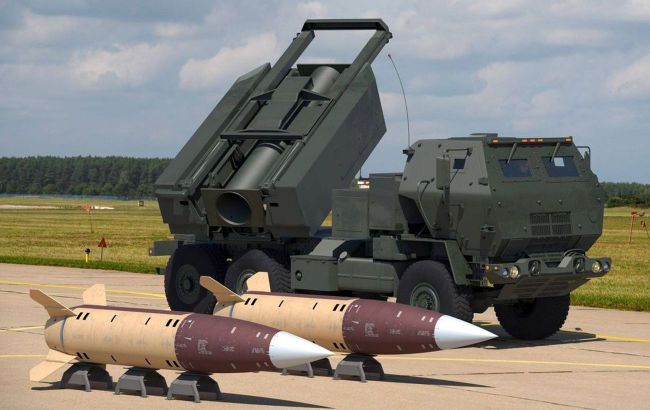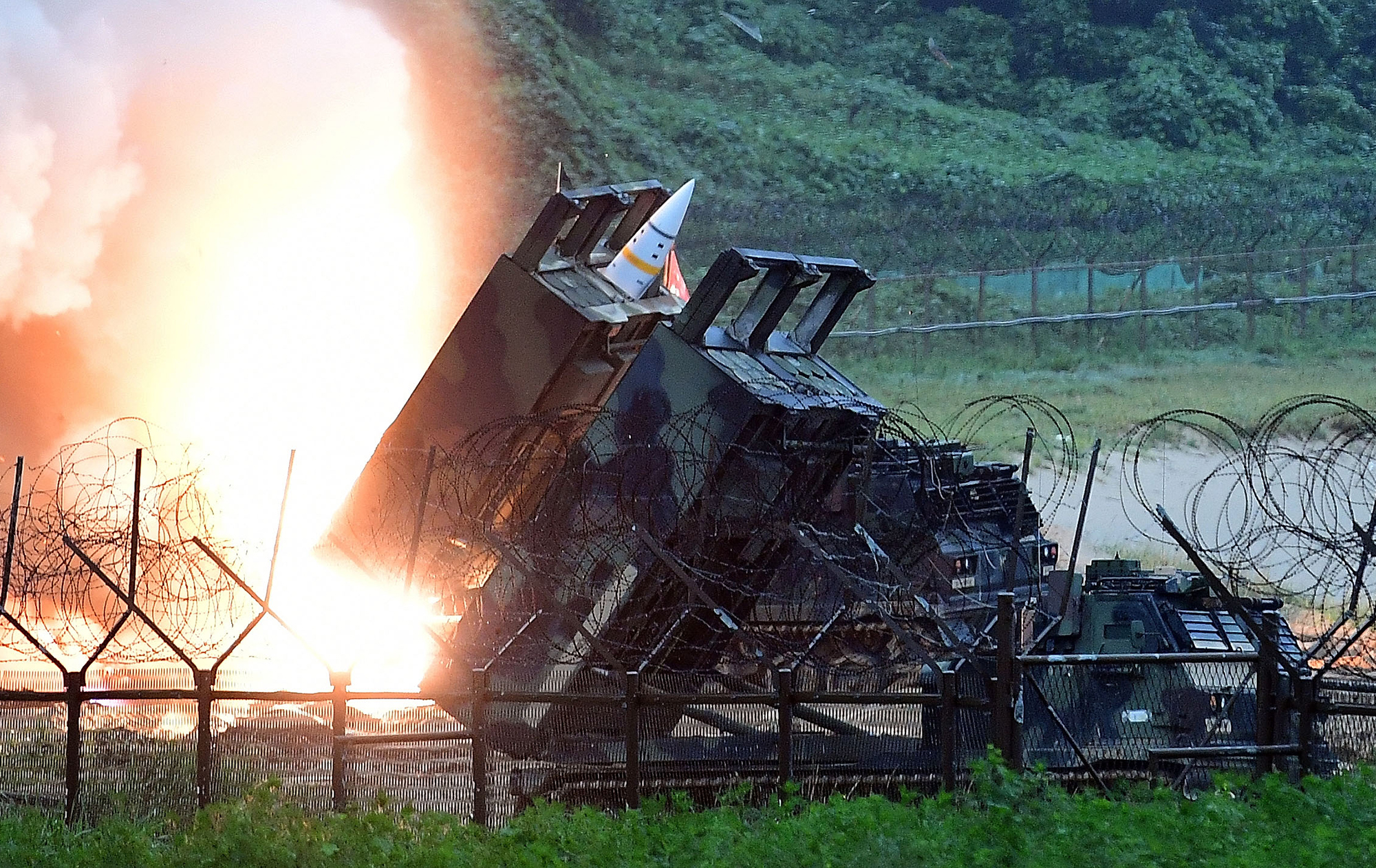ATACMS takes battlefield: Key highlights of U.S. precision-guided missiles in Ukraine
 ATACMS missiles (Photo: facebook.com/inukraineofficial)
ATACMS missiles (Photo: facebook.com/inukraineofficial)
ATACMS missiles are precision-guided weapons with a range of up to 300 km. In the Ukrainian Armed Forces, they are capable of fulfilling tasks related to the destruction of air defense systems, airfields, and military bases deep within enemy territory. Discussions about providing these missiles to Ukraine have been ongoing in the USA for several months, and today, President Volodymyr Zelenskyy confirmed their use on the battlefield.
All the details about the transfer of ATACMS, missile specifications, and features can be found in RBC-Ukraine's material.
The following sources were used in preparing the material: a statement by the President of Ukraine, Volodymyr Zelenskyy, publications from The Wall Street Journal, NBC News, Newsweek, Defence Express, ArmyInform, Wikipedia, a statement from the spokesperson for the Air Force of the Armed Forces of Ukraine, Yurii Ihnat, and expert commentary.
What is known about ATACMS
ATACMS (short for Army Tactical Missile System) is an operational-tactical missile system produced by the American company Lockheed Martin.
It is a ballistic missile of the ground-to-ground class, with a range of up to 300 km depending on the modification.
The average length of the missile is 4 m, the caliber is 610 mm, and the weight of the warhead is up to 560 kg.
ATACMS is launched from ground platforms: wheeled artillery systems M142 HIMARS and tracked Multiple Launch Rocket System (MLRS) M270.
The missile is equipped with a solid-fuel engine that provides a flight range of approximately 165-300 km, depending on the warhead's weight.
In the basic version of the missile, only an inertial navigation system (INS) was used, but in subsequent modifications, the INS was supplemented with a GPS geopositioning system, increasing the accuracy of hits in certain versions to 10 meters.
Development of the ATACMS missile began in the 1980s and was adopted by the U.S. Army in 1988. It was used during the Persian Gulf War in the course of the U.S. Operation Desert Storm, as well as in the wars in Iraq and Afghanistan.
Currently, ATACMS is in service with the armies of Greece, South Korea, Bahrain, Poland, Romania, the UAE, the USA, Qatar, and Türkiye.
 Photo: ATACMS missile (screenshot from the video)
Photo: ATACMS missile (screenshot from the video)
Types of warheads for ATACMS
ATACMS missiles use blast and fragmentation or cassette warheads, depending on the modification. A cassette missile can carry from 275 to 950 submunitions of the M74 type or 13 self-guided BAT submunitions.
The M74 submunition for cassette warheads is designed to target personnel and unarmored vehicles. It has incendiary capabilities due to the presence of special materials. The area and density of submunition impact depend on the preset container burst height.
Missiles with blast and fragmentation warheads are used to destroy fortifications and bunkers.
ATACMS modifications
The family of ATACMS missiles of various modifications is called AFOM, which stands for the Army TACMS Family of Munitions. Variants of AFOM missiles differ in warhead weight and type, range, accuracy, and guidance system.
However, they all have standardized dimensions for ease of use on the launching platform:
- Number of stages - 1
- Missile length - 3.96 m
- Missile diameter - 0.61 m
- Wingspan - 1.4 m.
ATACMS Block I (M39, MGM-140, MGM-140A)
Missile with inertial guidance. The cassette warhead carries 950 M74 type submunitions with an approximate range of 165 km. Accuracy - 225-250 m. Warhead weight - 560 kg.
ATACMS Block IA (M39A1, MGM-140B)
Cassette warhead carrying 300 M74 submunitions but with an extended range of up to 300 km. The missile uses both INS and GPS in its guidance system. Accuracy - less than 100 m. Warhead weight - 160 kg.
ATACMS Block II (M39A2, MGM-164)
A variant of the missile based on Block I. The warhead is cassette-based with 13 self-guided BAT submunitions. The guidance system is a combination of INS/GPS. Range - 140 km, accuracy - 200 m. Warhead weight - 260 kg.
ATACMS Block IA Quick Reaction Unitary (M57, MGM-140E, MGM-168, T2K, XM57)
Developed from Block IA, it uses a unitary high-explosive warhead weighing 227 kg instead of cassette submunitions. An enhanced version from 2005 is capable of flying over obstacles and engaging targets with vertical plunging. Accuracy - 9 m, range - up to 300 km.
Explosions in Berdyansk and the role of ATACMS
During the night of October 17, the Ukrainian Armed Forces launched missile strikes on the airfields in the temporarily occupied cities of Luhansk and Berdyansk. The Special Operations Forces reported that Operation Dragonfly resulted in the destruction of 9 Russian helicopters, air defense systems, an ammunition depot, and more.
Subsequently, information emerged that ATACMS missiles were used on the airfields under occupation. In particular, The Wall Street Journal reported that Ukraine used these long-range missiles for the first time during the war with Russia.
In his evening address, President Volodymyr Zelenskyy confirmed that Ukrainian military forces had used ATACMS missiles on the battlefield.
"And today I am especially grateful to the United States. Our agreements with President Biden (President of the United States Joe Biden - Ed.) are being implemented. They are being implemented very accurately - ATACMS have proven themselves," Zelenskyy added.
Information about the specific modifications and quantity of ATACMS missiles provided to Ukraine is not available at the moment.
The significance of ATACMS missiles for Ukraine
ATACMS missiles pose a threat to Russian air defense systems. According to Yurii Ihnat, the spokesperson for the Ukrainian Air Force, the enemy would not be able to effectively counter them.
"It's ballistic. Russian systems are unlikely to effectively counter it. It can hit targets at least 300 km away, perhaps even more. Just the word 'ballistic' will cause concern for the Russians," he said.
ATACMS missiles can be used for striking concentrations of troops, military vehicles, targets, and airfields with aircraft.
 Photo: ATACMS launched from M142 HIMARS or M270 MLRS, which are in Ukraine's arsenal (Getty Images)
Photo: ATACMS launched from M142 HIMARS or M270 MLRS, which are in Ukraine's arsenal (Getty Images)
Earlier, in a comment to RBC-Ukraine, expert Valerii Riabykh explained that long-range missiles would be necessary for the preparation and eventual liberation of Crimea.
"We need long-range weapons to prepare the battlefield for the subsequent liberation of Crimea. We have been observing the gradual displacement of the enemy from the area they tried to occupy for quite some time now. At the same time, there is a process of striking enemy airfields, which is also an element of disrupting the air defense system in Crimea and reducing the number of enemy aircraft used in the south," he said," he said.
Strikes on airfields or even the mere creation of a threat to them could compel the Russian occupiers to relocate their aviation, which would change the situation on the battlefield, noted the expert.
According to Valerii Riabykh, there are three versions of ATACMS missiles that could be in Ukraine's arsenal. Two of them are exclusively cassette-based, while the third is loaded with self-guided munitions. More details about these types of missiles can be found in RBC-Ukraine's material.
Discussion in the USA regarding ATACMS
There has been no official announcement from the U.S. regarding the transfer of ATACMS to Ukraine. However, today, The Wall Street Journal reported that Ukraine had used these long-range missiles for the first time during the war with Russia. According to the media sources, a small batch of ATACMS was recently sent to Ukraine.
Information about the approval of the transfer of a limited number of missiles by the U.S. President was previously reported by Western media. NBC News, for example, stated that during the meeting between Volodymyr Zelenskyy and Joe Biden in September 2023, the latter had informed that the U.S. would provide a small quantity of long-range ATACMS missiles to assist in the war with Russia.
The New Yorker reported that the decision to provide Ukraine with these missiles had been made before Zelenskyy's visit to Washington.
Later, Joe Biden himself intrigued with his statement that the U.S. had given everything Ukraine had asked for. "I spoke with Zelenskyy, so we worked out everything he asked for," the American leader replied.
Newsweek mentioned that the Ukrainian Armed Forces might receive cassette-based ATACMS. This includes the M26, M26A1, and M39 missiles with ranges of 36 km, 45 km, and 160 km, respectively.
According to the new agency, cassette-based missiles with shorter ranges became a compromise option. This is because the White House had consistently refused to supply any version of ATACMS due to concerns about domestic stockpiles and fears that Ukraine's use of these missiles could provoke an escalation of Russian countermeasures.

